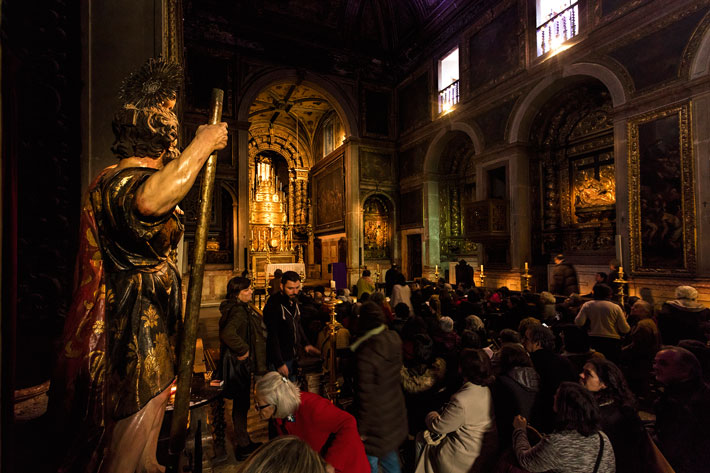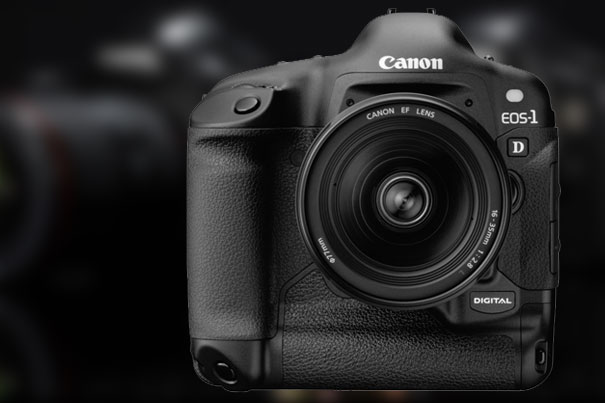
Since the introduction of Dual Pixel AF in the EOS 70D, Canon as extended its use to other models, from the EOS 7D Mark II to the EOS-1D X Mark II or the new EOS 80D. The EOS 5D Mark IV, to be launched this year, will also have Dual Pixel AF. Why did they keep it out of the EOS 5DS/S R?
When recently I had the chance to try the EOS 5D SR, I used it from a photographer’s perspective and did not bother much with the video aspects of the camera, as Canon is the first to say this model is not meant for video. Still, video is there in case a photographer needs it. It’s just a pity that Canon did not use Dual Pixel AF to make it REALLY work for photographers.
Maybe it all comes down to the fact that the EOS 5DS R has a sensor with 50 million pixels. Maybe, and maybe Canon can correct me if I am wrong, it was difficult to get those pixels to do both the image capture and AF like Dual Pixel AF systems do. But from where I see it, if it is possible, Canon made a mistake not to introduce Dual Pixel AF (which they now call DAF), exactly because the EOS 5DS R (and the twin sister, EOS 5DS) are both designed for photographers. And photographers do have a hard time to focus manually in video, as they have been used, for decades, to use autofocus.
I talk from experience. For decades I used manual focus, and it took me quite a few models from Canon AF cameras – up to the EOS 10, in fact – to move from my FD lenses to the EOS system… not long after I had bought a nice T90 which was shelved after only a few rolls of film. I was hooked on AF, because being blind as a bat, the AF system opened new doors for me. Although, sometimes, I will use manual to adjust focus, being able to rely on AF was a game-changer.
I think photographers in general will be like me. So, when faced with video, the first sad thing we discover, with DSLRs, is that they usually are not very good at focusing. Video professionals using DSLRs have, apparently, no problems, as they all know how to focus-pull. We don’t. No matter how much I try, I can not get perfect results.

Canon is aware of the problem. The information provided about AF with DSLRs states that “for a large part of the time, autofocus is not as useful for movie shooting as it first appears. When shooting movies, manual focus can appear more natural and is therefore easier to watch for a viewer” and add that “all EOS cameras that feature an EOS Movie mode have had a form of autofocus that works in Movie mode, however their method of focusing meant that the autofocus is neither smooth nor natural during recording”.
Canon tried to solve that problem introducing their Hybrid AF mode for video, first on the EOS 650D/Rebel T4i, in 2012. When used with a STM lens, a type of lens Canon designed especially for video, the camera offers a better experience in terms of AF. Hybrid CMOS AF is a combination of two previous AF technologies, phase detection as used in normal AF shooting, and contrast detection as used in previous versions of Live View or EOS Movie focusing.
To make the system work, the phase detection pixels are embedded within the main imaging CMOS sensor. This way they can measure the subject distance from the focal plane very quickly, while the contrast AF can check for exact focus very accurately. This helps to shortcut the normal hunting in- and out-of-focus that is common with a contrast AF system by starting the search for perfect focus much closer to the final AF setting.
Hybrid AF achieved a new level of sophistication with the Canon EOS 100D/Rebel SL1 DSLR, from 2013, which introduced Hybrid CMOS AF II. The new system offers AF across a wider area of the frame than Hybrid CMOS AF, extending out to approximately 80% of the shooting area both horizontally and vertically.
The next step in video autofocus sophistication came with the EOS 70D, from 2013, which introduced Dual Pixel CMOS AF, subsequently named Dual Pixel AF, also DPAF and more recently, by Canon, presented under the letters DAF. Dual Pixel AF has been heralded as a true revolution in terms of focus in video when it comes to DSLRs.
According to Canon, the performance of the system is similar to that found in more traditional video cameras, like the Canon Legria range. The camera uses a new style of CMOS sensor where all the pixels on the sensor are used not only to form the image, but also to perform phase-difference autofocus. This is achieved by each pixel on the sensor being composed of two independent photodiodes, both of which carry out both imaging and autofocus roles.
With this new sensor, autofocus in Live View and EOS Movie shooting feels more natural and the tracking AF performance is greatly improved in speed but also in smoothness compared to previous systems. Compared to the Hybrid CMOS AF II, Dual Pixel CMOS AF performs around 30% faster, although, according to Canon, both systems offer, in terms of coverage, an AF area in Live View or EOS Movie shooting equivalent to approximately 80% of the frame both horizontally and vertically, providing a wide area coverage.
Although many consider that these AF systems are for amateurs, the truth is that Canon has implemented the Dual Pixel AF system, which is getting even better – in many of their Cinema EOS line of professional cameras, and even retrofitted some models already launched to use the system. It’s an indication of the potential of the technology, which Canon is now extending, apparently, to the next version of their EOS 5D family of DSLRs – the EOS 5D Mark IV – and introducing to models in the EOS XX series and an eventual update to the EOS 7D Mark II. As of now, the Hybrid AF II system is being used in entry level DSLRs (EOS XXX), and nothing suggests that Canon will adopt Dual Pixel AF for all their cameras.
Still, on a model like the EOS 5DS R, it would make sense, because it would allow photographers to do justice to the millions of pixels present in the sensor. I write this after trying the camera at a unique event, in Lisbon, an amateur church choir created as a means to get money to repair the roof of one of Lisbon’s most fantastic small churches: Saint Christopher’s Church.
The church of Saint Christopher, built in the 17th century, has survived the 1755 earthquake in Lisbon but may not survive the 21st century. In its gilded interior 36 canvases from Bento Coelho da Silveira stand out (1617-1708), yet the building needs urgent repairs. The total sum necessary for the restoration of the church was set in one million and two hundred thousand euros. The sum needed for the restoration of the canvases was set around three hundred thousand euros and three hundred and fifty thousand euros.
The amateur choir, formed by volunteers, some with no experience in singing, created a unique show chanting the musicality of religious songs of different faiths that can be found in Lisbon. The mix of original themes that aim to draw in space the essence and intent of each prayer resulted in a unique show that showed the acoustic potential of the space. This is probably one of the most interesting aspects of the video I edited to show here, especially as it was captured with the built-in microphone of the EOS 5DS R.
The characteristics of the space surely helped to get the final sound in camera, and while it may not sound very professional, it does give enough quality for any “run & gun” coverage similar to the one done here. Just so readers get one idea of the gear used, photographs were taken with 17-40mm and 100mm macro lenses and the video was filmed with a 100mm macro lens I had with me that day. No tripod or even a monopod, I stood up against a wall of the church and filmed everything holding the camera. Could not move from there as the place was packed with people. The magic of the human voice attracted a crowd!
Regarding sound, I must confess I am amazed, because it shows Canon has worked to get better results from the built-in microphone. Earlier models would not offer this quality. I am curious to see how the EOS 80D performs in terms of sound, as a lot of things have changed on the EOS XX segment, and I intend to check the newer models as they become available. Again, this does not substitute a proper external recording, or a real microphone, but for someone that does not do video consistently, it is good to know the built-in microphone can save you. It surely did here.
I can not say the same about autofocus. Although the hunting of the camera’s AF does looks interesting in the context of a dark space like a church and this specific event, the system is not adequate for tracking subjects during video recording. Even with almost static subjects. Dual Pixel AF would make for a more reliable system, no doubt, and would be a welcome aid to photographers. The system is available on the EOS-1D X Mark II and will be present on the new EOS 5D Mark IV (demonstrating this is not just something for entry level cameras, as some say), but then, again, we’re talking about a sensor with 24.2MP. With DualPixel AF and a touchscreen like the EOS 80D, the EOS 5D Mark IV is going to be a video machine!
Still, my question keeps unanswered: can Canon implement Dual Pixel AF in a monster sensor like the one on the EOS 5DS/S R? Or is the lack of a Dual Pixel AF the price to pay to have a 50MP camera?


